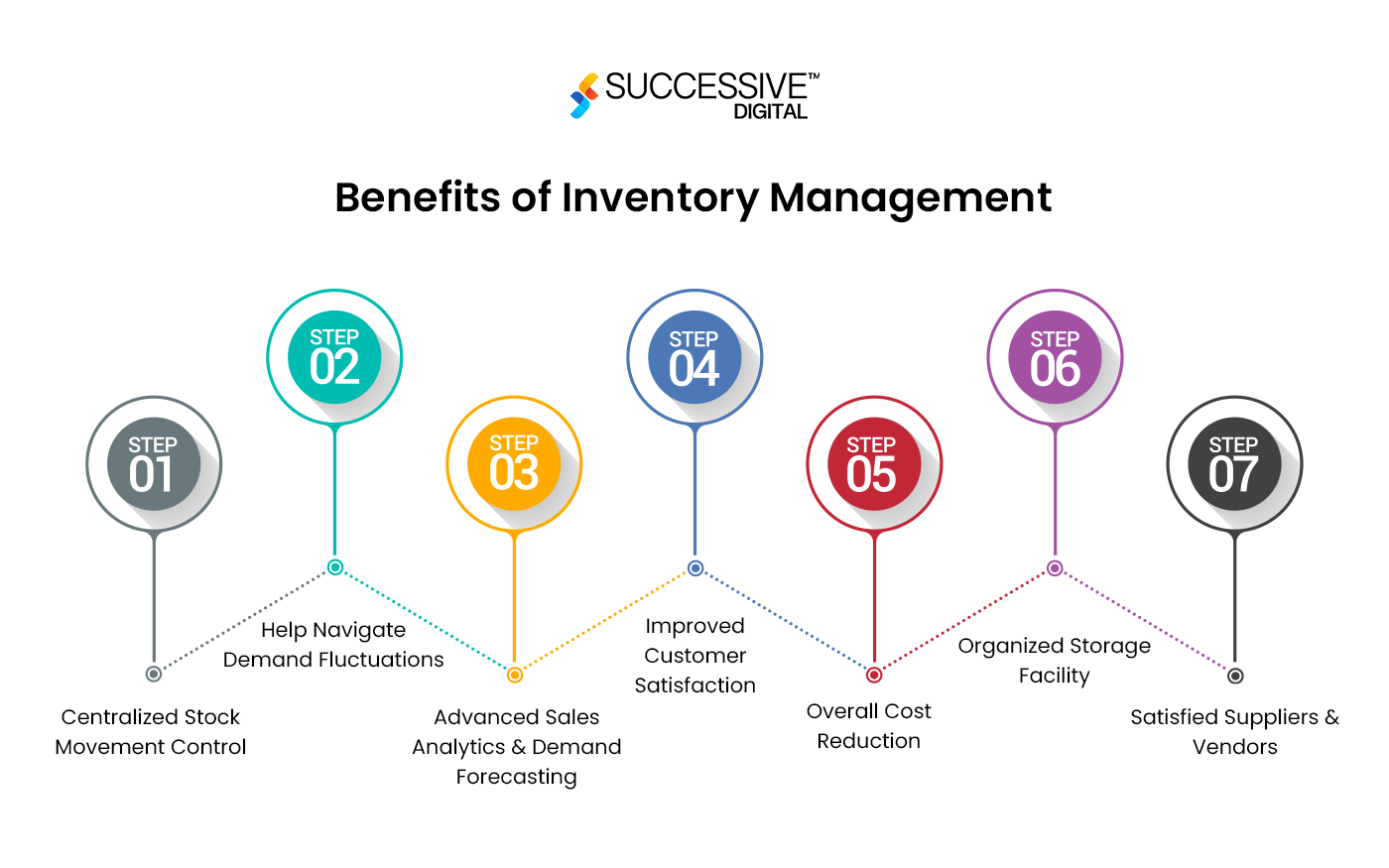An effective inventory management system is critical for any business that offers physical goods. It includes not just retaining stock levels but also ensuring the required quantity of products is available at the right time, directly impacting operational efficiency and customer experience. However, dealing with challenges in inventory management may be a mission-critical task due to the complexities of demand forecasting, stock balancing, and real-time monitoring. Conventional strategies regularly need to catch up in addressing these challenges while addressing the main issues of overstocking, understocking, and inefficiencies in order fulfillment to ensure efficient logistics & distribution operations.
In the competitive market, businesses need sophisticated tools to handle stock complexities. This is where inventory management solutions (IMS) come into play. An IMS offers a comprehensive system that automates inventory, provides real-time visibility, and improves forecasting accuracy, helping brands streamline operations and maintain stock levels. This blog explores the benefits, challenges, and technical solutions offered by automated inventory management and how they can transform businesses globally.

The Importance of Effective Inventory Management
Inventory management software is essential for several motives:
- Cost Control: Inventory represents a considerable part of a company’s property. Right management helps avoid overstocking, which ties up capital, and understocking, which could lead to lost income and disappointed customers.
- User Experience: Ensuring that the right products are available while customers want them is critical for maintaining user loyalty and brand trust.
- Operational Performance: Automated inventory management streamlines operations, lowering the effort and time required to track, control, and order inventory.
Regardless of its significance, inventory management software is tied-up with challenging situations. These challenges can result in inefficiencies, accelerated costs, and possibilities of growth hurdles for any business.
Common Challenges in Inventory Management
Demand Forecasting: Appropriately predicting user demand is considered one of the most challenging situations in the inventory management system. Overestimating demand can result in extra inventory while underestimating it can lead to stockouts and lost sales.
Overstocking and Understocking: Balancing stock levels is a regular battle. Overstocking results in higher carrying fees, including storage, coverage, and obsolescence. Understocking, on the other hand, can result in overlooked sales opportunities and customer dissatisfaction.
Inventory Visibility: Real-time visibility into stock levels across multiple locations or sales channels is crucial. Without proper automated inventory management, stock discrepancies missed sales, and poor decision-making can occur.
Order Management: The complexity of managing purchases, sales orders, and returns, especially with multiple suppliers and users, cannot be overstated. Errors in order processing can lead to delays, incorrect shipments, and increased operational costs.
Warehouse Management: Effectively organizing and managing a warehouse is essential for ensuring that products may be positioned and shipped quickly. Improper warehouse management can cause inefficiencies, multiplied expenses, and errors in order fulfillment.
Dealer Management: Relying on multiple suppliers can complicate the internal inventory management system, mainly when managing inconsistent lead instances, product quality, and communication troubles.
Inventory Shrinkage: Robbery, harm, and administrative mistakes can be direct challenges to inventory management and can lead to stock shrinkage, resulting in huge monetary losses for businesses.
Regulatory Compliance: Businesses in certain industries, including pharmaceuticals and food, should observe strict rules concerning inventory management. Failure to comply can result in fines, prison problems, and harm to the brand’s reputation.
How Inventory Management Systems Help
-
Improved Demand Forecasting
One of the key benefits of inventory management is that it uses advanced algorithms and up-to-date sales statistics to assist businesses in expecting future demand. By reading historical traits and styles, an inventory management system can generate forecast data that can be more reliable, reducing the hazard of overstocking or understocking. Some IMS solutions also integrate with point-of-sale (POS) systems and e-commerce platforms to offer real-time sales information, enhancing the accuracy of future demand.
Technical Details:
Machine Learning Algorithms: Cutting-edge inventory management solutions often leverage ML algorithms that process large datasets and identify patterns in user behavior, seasonal developments, and marketplace conditions. The algorithms can adapt to changes within the data, improving forecast accuracy over the years.
Real-Time Data Integration: By integrating with POS systems, e-commerce platforms, and enterprise resource planning (ERP) structures, inventory management software can access updated real-time data and sales information, providing businesses with up-to-date details on demand forecasting.
-
Optimized Inventory Levels
Automated inventory management enables businesses to maintain optimum inventory by automating the system of stock replenishment. The system can mechanically trigger purchase orders while the level of stock falls under a predefined threshold, ensuring that goods are always available when needed. This reduces the hazard of abundant carts and minimizes the costs of overstocking.
Technical Details:
Reorder Point Calculation: One of the vital benefits of inventory management is that is help businesses calculate the reorder based on factors, such as lead time, level of stock, and average demand. This ensures that orders are fulfilled at the right time and are up to date.
Just-In-Time (JIT) Inventory: Some inventory management software also supports JIT inventory management, where stock is ordered and received just in time for production or sale, lowering shipping fees and minimizing the risk of obsolescence.
-
Advanced Stock Visibility
Inventory management systems provide real-time visibility into stock levels throughout multiple locations, warehouses, and sales channels. This visibility enables businesses to make informed choices about stock allocation, transfers, and fulfillment. With an IMS, businesses can track stock movement from the point it enters the warehouse to the point of sale, lowering the chance of discrepancies and ensuring correct stock records.
Technical Details:
Multi-Location Monitoring: Automated inventory management allows businesses to track inventory throughout several warehouses, retail stores, and online channels. This centralized visibility enables them to check stock out and overstock at each location in detail.
Barcode and RFID Technology: Inventory management solutions often integrate with barcode scanners and RFID (Radio Frequency Identification) systems, allowing real-time inventory tracking as it moves via the supply chain.
-
Streamlined Order Management
Inventory management software simplifies order management by automating order placement, processing, and fulfillment. The system can control purchase orders, sales orders, and returns, ensuring that orders are processed correctly and efficiently. This reduces the chance of mistakes, delays, and wrong shipments, leading to better user satisfaction.
Technical Details:
Integration with Shipping and Logistics: Many inventory control systems are designed to work with shipping companies and logistics partners. This integration permits organizations to display shipments in real time, present clients with specific transport timelines, and enhance the general customer experience.
Order Automation: State-of-the-art automated inventory management systems are built to automate purchase orders in accordance with set standards, like minimal stock stages or sales patterns. This automation substantially decreases the manual workload in order management, freeing corporations to concentrate on other vital activities.
Conclusion
Inventory management is a complex challenge requiring cautious plans, precise forecasting, and efficient execution. The right inventory management software, ready with the correct equipment, can help companies navigate those challenging situations by offering real-time visibility, automating key techniques, and optimizing inventory levels.












